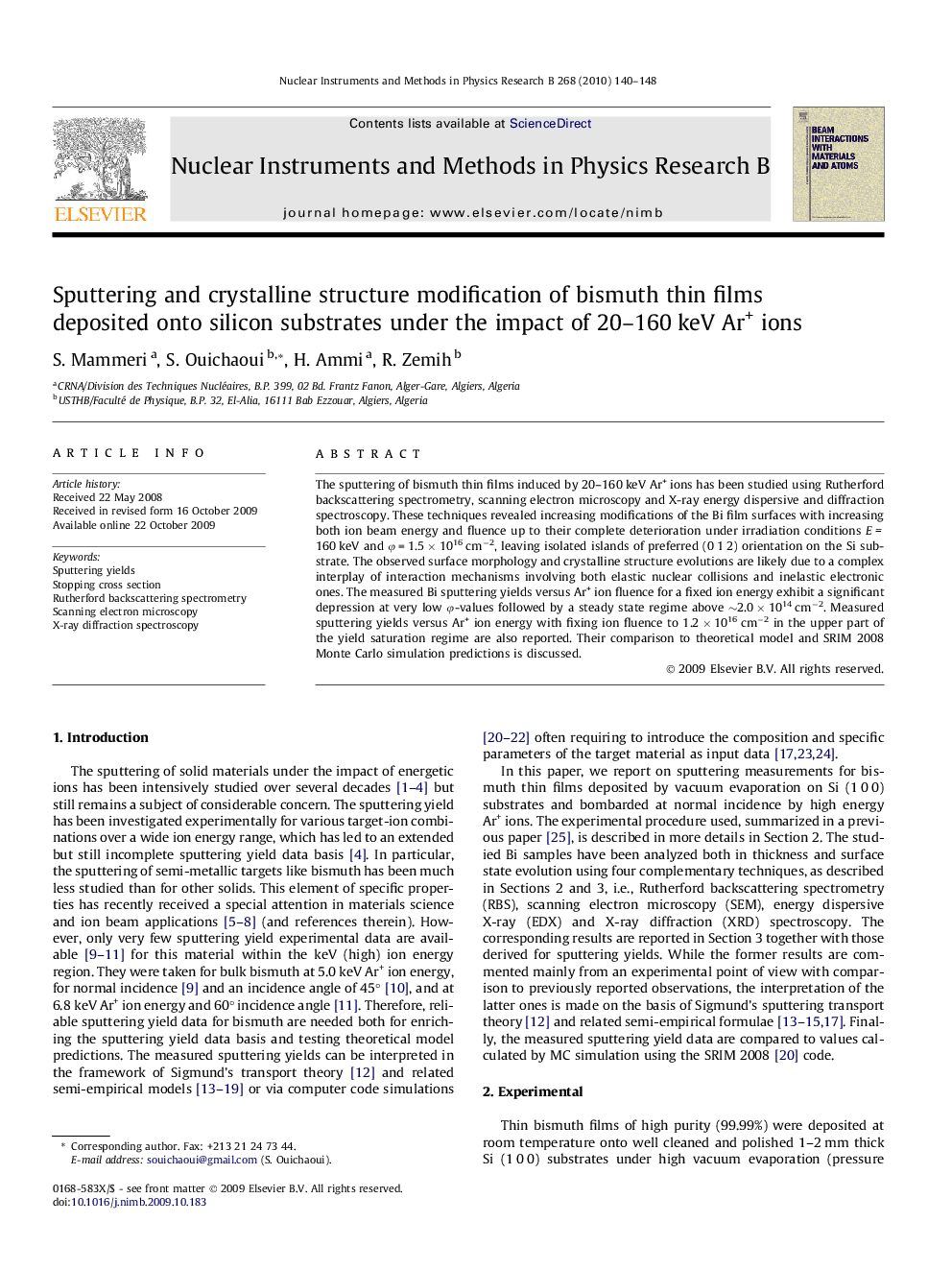| Article ID | Journal | Published Year | Pages | File Type |
|---|---|---|---|---|
| 1682066 | Nuclear Instruments and Methods in Physics Research Section B: Beam Interactions with Materials and Atoms | 2010 | 9 Pages |
The sputtering of bismuth thin films induced by 20–160 keV Ar+ ions has been studied using Rutherford backscattering spectrometry, scanning electron microscopy and X-ray energy dispersive and diffraction spectroscopy. These techniques revealed increasing modifications of the Bi film surfaces with increasing both ion beam energy and fluence up to their complete deterioration under irradiation conditions E = 160 keV and φ = 1.5 × 1016 cm−2, leaving isolated islands of preferred (0 1 2) orientation on the Si substrate. The observed surface morphology and crystalline structure evolutions are likely due to a complex interplay of interaction mechanisms involving both elastic nuclear collisions and inelastic electronic ones. The measured Bi sputtering yields versus Ar+ ion fluence for a fixed ion energy exhibit a significant depression at very low φ-values followed by a steady state regime above ∼2.0 × 1014 cm−2. Measured sputtering yields versus Ar+ ion energy with fixing ion fluence to 1.2 × 1016 cm−2 in the upper part of the yield saturation regime are also reported. Their comparison to theoretical model and SRIM 2008 Monte Carlo simulation predictions is discussed.
